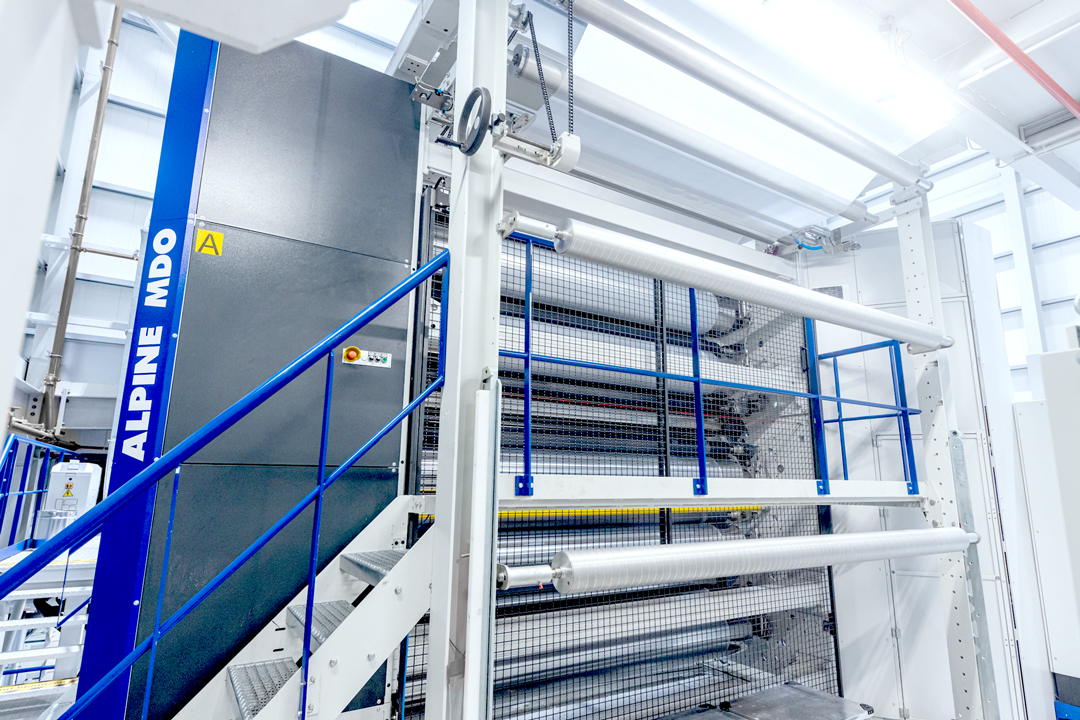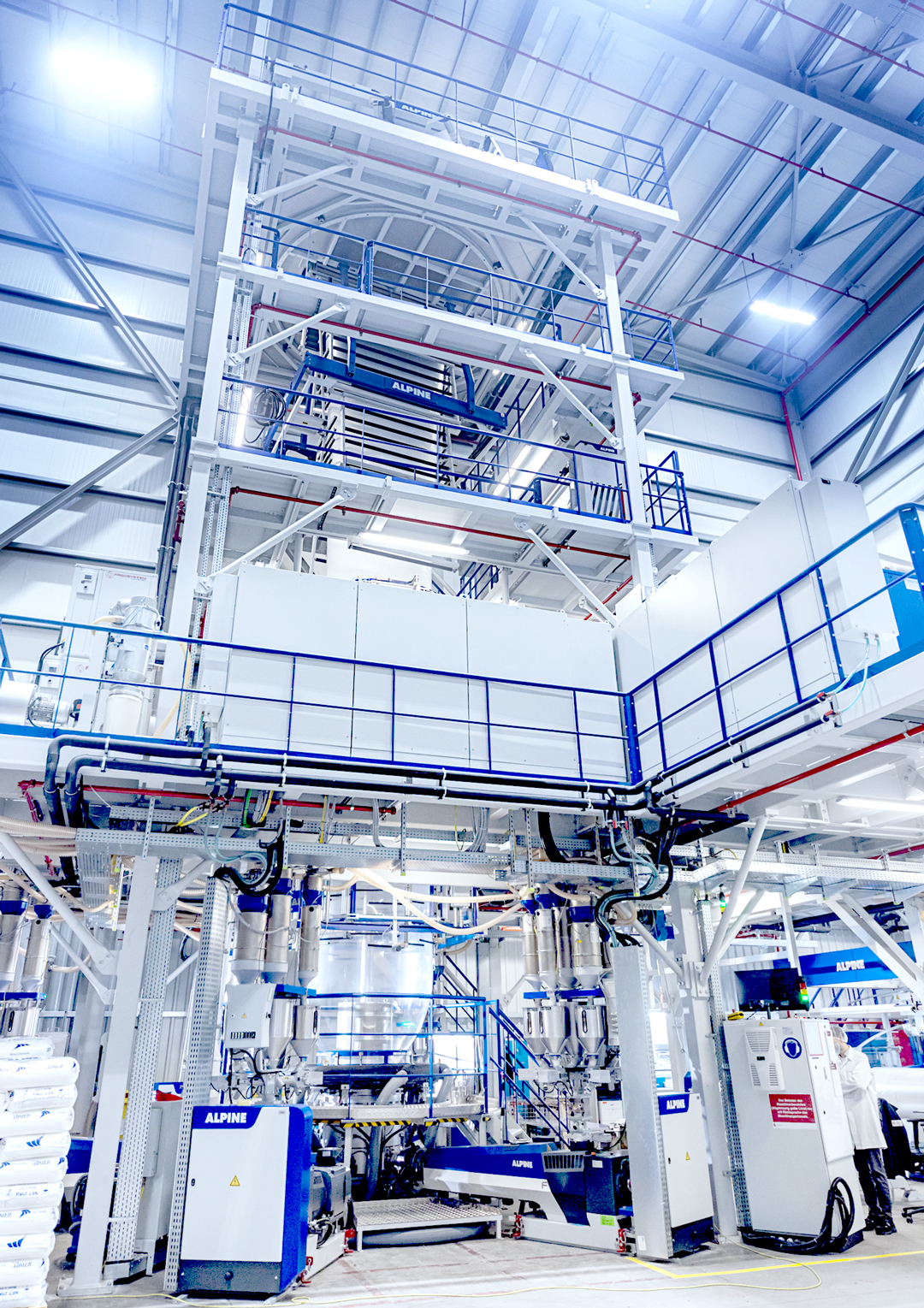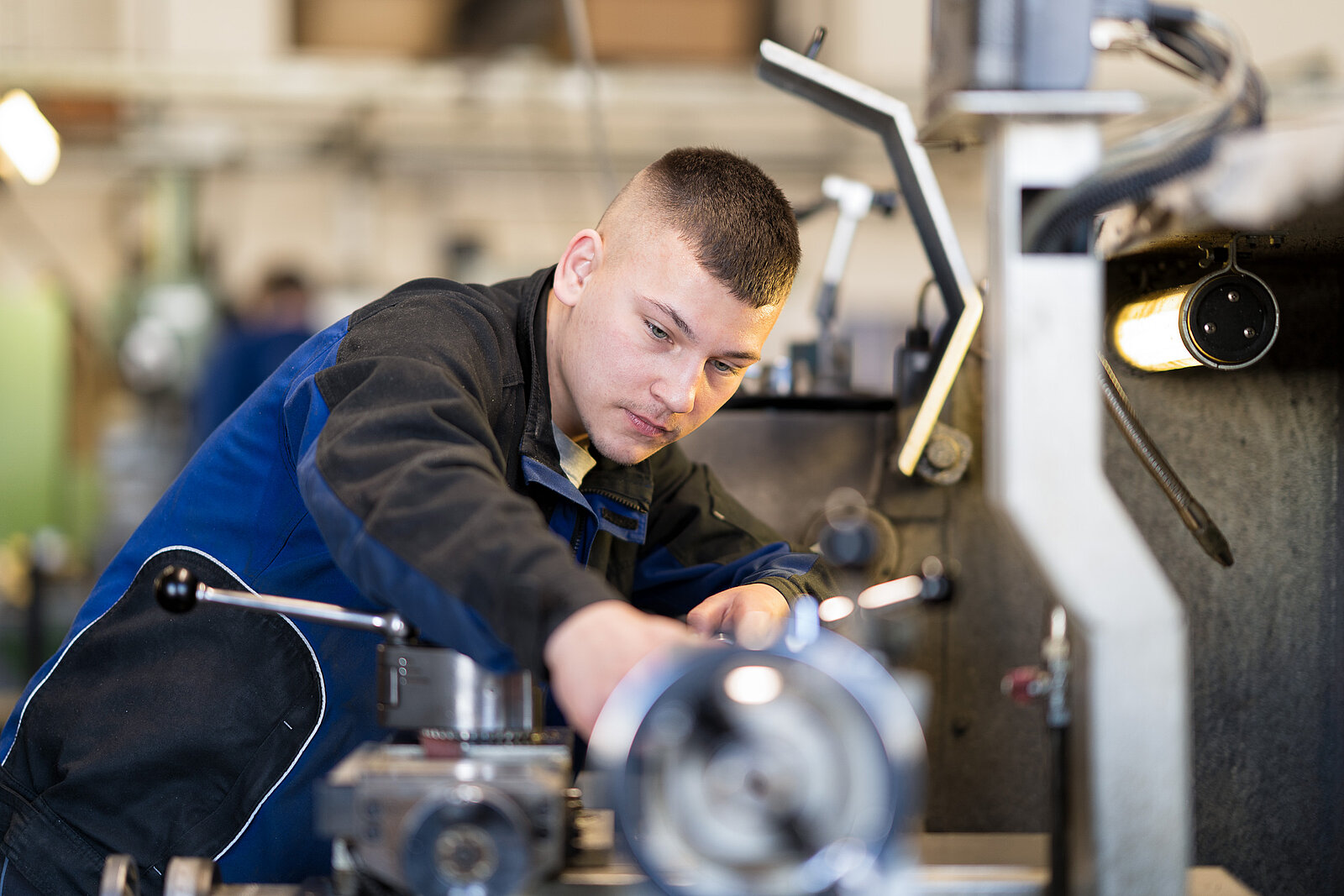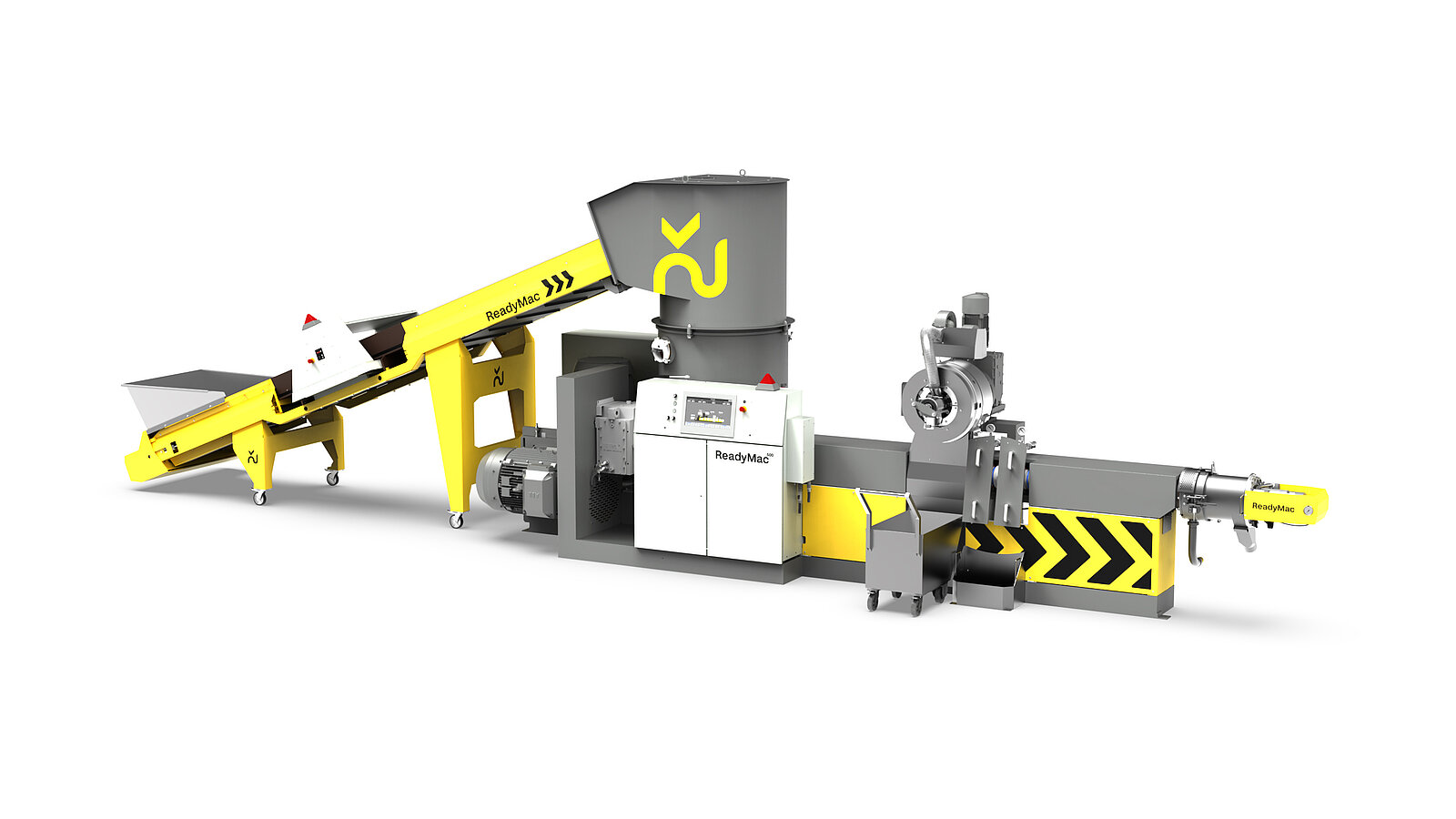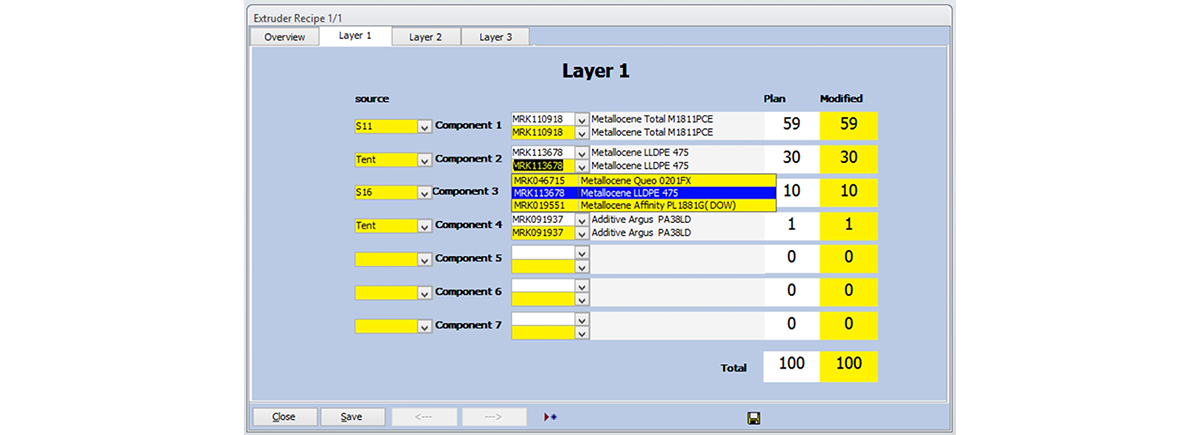Production of recyclable plastic films at Constantia Flexibles.
Constantia Flexibles, a leading global supplier of flexible packaging for consumer goods and pharmaceutical products headquartered in Vienna, has commissioned a modern 5 layer blown film line with inline MDO (Machine Direction Orientation) from Hosokawa Alpine at its site in Pirk in Germany. Instead of the usual ten rollers, this MDO has twelve, which gives the film more time to cool down after stretching. This improves the homogeneity and physical properties of the stretched film and is one of the many small components for better film quality.
Constantia Flexibles uses the new machine technology to produce EcoLam HighPlus, among other things. It is one of the products in the company's monopolymer EcoLam family based on PE. "Plastic packaging materials and films are an essential part of our modern world," explains Prof. Achim Grefenstein, Head of Group Research and Development at Constantia Flexibles. In recent years, the demand for more sustainable packaging solutions has increased continuously as part of efforts to protect the environment. The use of mono-materials or packaging laminates made from a single material is therefore becoming increasingly important for the transition to a genuine circular economy. Constantia Flexibles wants to play an active role in shaping this trend.
Mono-materials fulfil the requirements for a circular economy
"We pursue a 360-degree approach in order to be able to offer recyclable solutions made of paper, aluminium, polypropylene and polyethylene," emphasises Prof. Grefenstein. The aim is basically to develop and produce sustainable, innovative packaging solutions that both optimally meet customer needs and minimise the negative impact on the environment. Constantia Flexibles has its competence centre for films in Pirk with 800 employees and a large R&D department. Formulas are developed there and tested and checked in the company's own laboratory. In addition, all production steps are carried out at the plant - from extrusion, metallisation and printing to lamination, slitting and packaging. "For us, the acquisition of an MDO machine at the Pirk site was the next logical step in expanding our range of services," says Prof. Grefenstein. This is because the mono-PE films produced with it are recyclable, reduce plastic consumption and minimise the environmental impact compared to composite films made from several materials. "For us, these are the key elements of a functioning circular economy," adds Grefenstein.
Production of high-performance mono-material composites made of polyethylene
Hosokawa Alpine’s MDO technology is a crucial building block for the production of high performance monomaterial composites from polyethylenes and is based on the monoaxial stretching of blown films. Here, the film is pulled between two rollers that rotate at different speeds. Depending on the application, the film runs over a total of eight to twelve rollers in this process, two of which are stretch rollers. After heating to the optimum temperature, the film is stretched to the desired stretch ratio during the stretching phase. The stretching process reduces the film thickness while improving the optical and mechanical properties. These include, for example, transparency or amenity to processing.
"MDO films also have an improved barrier effect due to the orientation in the material. This keeps packaged products fresh and protected for longer," explains Frank Bernotat, Senior Sales Manager at Hosokawa Alpine. "MDO also allows us to reduce the thickness and therefore the amount of material used in the PE films - without compromising on mechanical performance," adds Prof. Grefenstein. This is particularly important for subsequent process steps such as printing or laminating. Technical challenges with regard to thickness profile and flatness were continuously improved in the joint further development of the system by Constantia Flexibles and Hosokawa Alpine, as the quality of the blown film has a strong influence on the further processing steps.
Customised system design and high film quality
"More than 100 of our MDOs are now in use around the world," says Bernotat. Working with the customer, Hosokawa Alpine designs the respective MDO blown film line precisely for the desired film production, customised exactly to the customer's needs. "This was also the case at Constantia Flexibles and is ultimately the secret of our success. The other is the quality of the MDO films," says Bernotat. It is characterised by excellent workability, optimised flatness and no hanging edges. To ensure this, the MDOs from Hosokawa are equipped with three unique features: TRIO technology (Trim Reduction for Inline Orientation) for optimised flatness and roll cylindricity, flexible adjustment of the stretching gap to reduce necking and the unique vacuum technology for optimum flatness and outstanding process stability.
Targeted adjustment of barrier properties
"Typically, the MDO PE film is combined with a PE sealing film," says Prof. Grefenstein. If you want to increase the barrier against oxygen and water vapour, an additional metallised MDO-PE film can also be integrated into the composite. "This allows our customers to cover a wide range of applications," emphasises Bernotat. An important prerequisite for metallising a film is very good flatness, which is achieved by the vacuum roller from Hosokawa Alpine. Mono-PE films retain their recyclability even when laminated. In Constantia Flexibles' proprietary formulations, for example, only minimal quantities of necessary barrier layers and other functional layers are used.
Good prospects for the future
The market for MDO films and mono PE films has grown steadily in recent years and is expected to continue to develop positively in the future. "The growing demand for sustainable packaging solutions and increased consumer awareness of environmental issues will further accelerate this trend towards a circular economy," predicts Prof. Grefenstein. "Our MDO technology makes a significant contribution to reducing plastic consumption and promoting recyclability, making it an attractive option for the packaging industry," concludes Bernotat.
